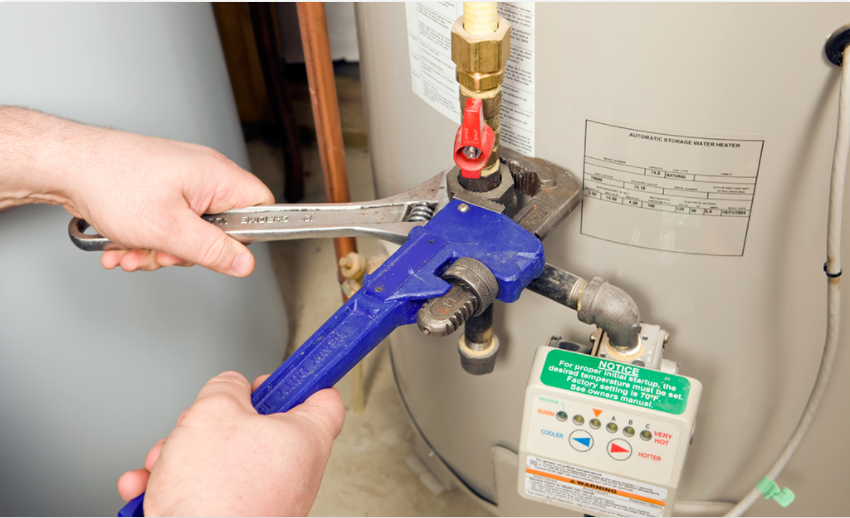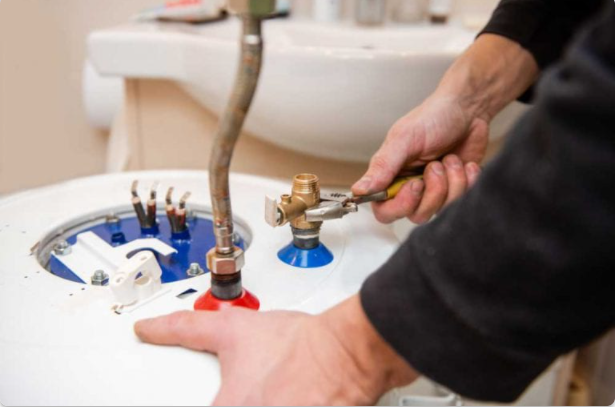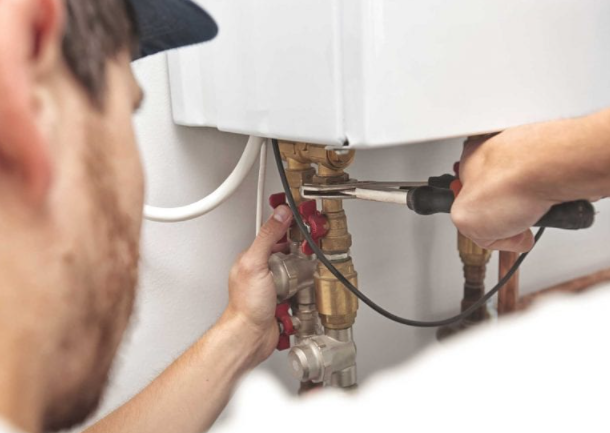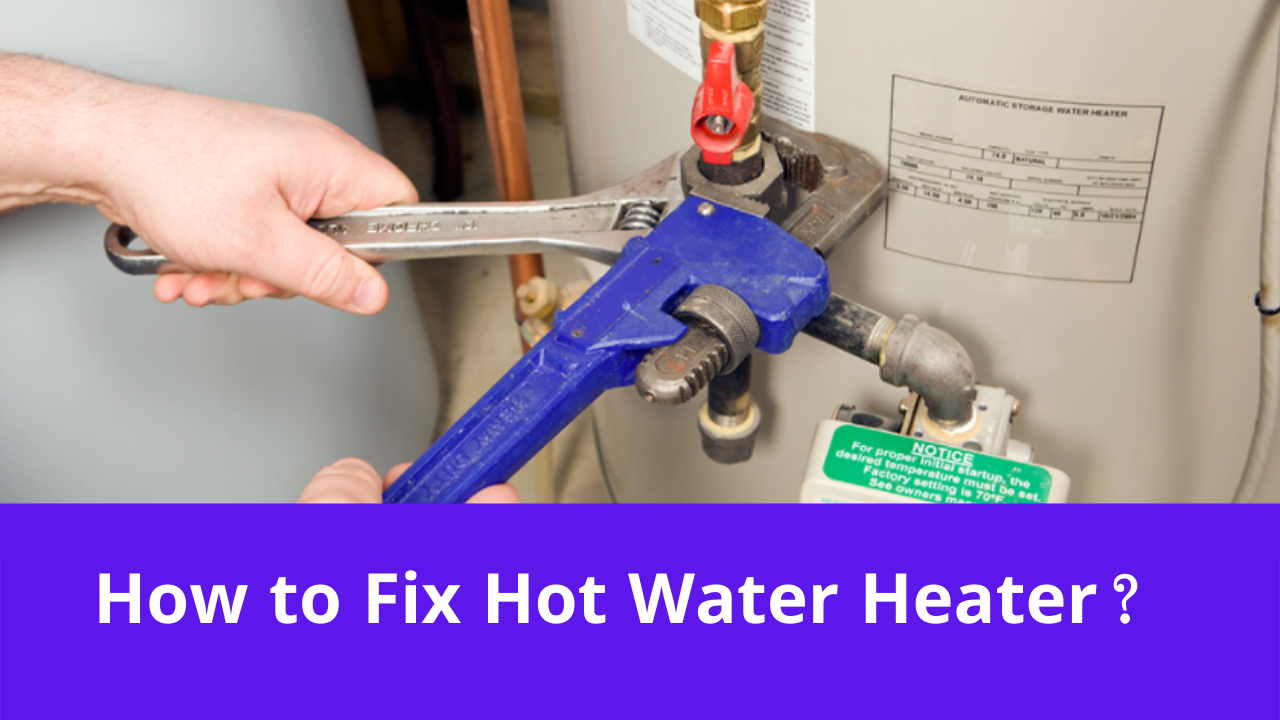Installation of a hot water heater requires proper plumbing and professional help in order to avoid any inconvenience. However, if it is not done right, there are chances that the malfunctioning will show up at the most unexpected time. Thus, to deal with such situations it is better to have the basic know-how of how to fix hot water heater in an emergency.
In this article, apart for fixing the unit, we are sharing some important queries that you should know about the health of your hot water heater. Nonetheless, the first thing is
How to Know When You Need a New Hot Water Heater?

Apart from not getting the hot water in your shower or for other household queries, there are some other signs that will notify you that you need a replacement. One of the most common signs is a water pool around the heater caused by water leakage.
Other than that,
- If you have noticed a significant increase in your electricity bill, that shows that your water heater is consuming more power than usual.
- The water heater starts to flow rusty water or small particles in the water. This indicates that the tank has corroded from the bottom or just started to get corrosion.
- If you are getting cloudy water then this means that your water heater tank has accumulated sediments.
- Water leakage might not seem an issue initially but requires you attention as it may decrease the hot water flow.
- Sometimes, the water heater begins to make loud noises while heating up the water. This is the sign that there is a build up of either limescale or the sediment.
In case there are any indications out of it, that means your hot water heater needs a causal repair if caught initially and does not require any replacement.
How to Fix Hot Water Heater?

To fix your water heater, first thing is you need to identify what type of heater you own; either a gas-fueled or an electric heater. You may find both similar as they use an insulation storage tank to prevent the heat loss likewise.
The main difference is the heat source in it. In an electric heater, the water is heated by the lower and upper heating elements. Whereas the gas water heater has a gas burner for heater the water.
For an electric water heater, it reduces or stops the heat. This is caused usually when the heating element fails, in that case, you can replace it as it is inexpensive. However, sometimes other problems are caused by improper setting or lack of maintenance.
Note: If the issue is caused by the malfunctioning of some element, then try to check the warranty of the product first.
Water Leaks
If you observe the water leakage, this is caused by leaking valves or because of the plumbing connections. Sometimes, this is related to the tank problems leading to damage to the home and the unit as well.
This usually happens when the heating element is loose or the tank might have corrosion. In case for the loose end, you can take a wrench and fix it yourself. In spite of that, if you find that the tank has corrosion, you have to replace it then as it cannot be repaired.
Inadequate Hot Water

Generally, the water heater possesses 75% of its capacity for the hot water heater. For instance, a water heater with a capacity of 40 gallons fulfills a requirement of 30 gallons. When you find out the water heater is hot providing water but not in an adequate amount and not fulfilling the requirement. In that case, you should check if the water demand has increased.
If it is not then one of the heating elements is broken.
No Hot Water
If the water heater is not producing hot water, this might be the reason for the inappropriate power supply or the failure of the heating element. Make sure to check the circuit breaker in order to avoid the risk of tripping. Turn the switch off and on back after ensuring.
If it is not tripped then the first thing to fix your water heater is to turn it off then check if there is any malfunctioning with the upper heating element or the insulation.
FAQS
How to Shut off Water Heater?
If you have identified what the problem is, the first thing is shut off the unit safely. In order to do so, here are some simple steps to follow if there is a gas leakage or water leakage. It would be easier if you have access to the back of the unit.
- Locating the Unit: It is usually placed in the attic or near the garage.
- Find Out the Type of Water Heater: If you have a gas heater you need to find the temperature dial which is usually placed at the bottom of the tank, in the front. Turn it off if you have found that.
- For Electric Water Heater: In case of an electric water heater, you need to locate the breaker box for the unit in the home. Switch it off your unit.
- Plumbing Line: After switching it off safely, the next step is to turn off the valve to disconnect the water supply.
- Drain the heater: This applies to the traditional tank water heater. Hook the garden hose to the boiler drain if it is necessary.
- Locate the Gas valve: If it is a gas powered unit, locate the gas valve which is normally placed at the right side. Turn the lever or the knob to shut it off.
- Relief Valve: The last step is to turn off the relief valve and let the air enter the unit.
How long does it take to install a water heater?
A hot water heater installation requires a licensed plumber. Firstly, it depends upon whether you are replacing or installing a new hot water heater. If you are installing a new water heater from scratch then a professional plumber will take a minimum of 2 to 3 hours.
How Long to Replace Water Heater?
While estimating the time for how long to replace water heater, it will take almost 2 hours approximately. Replacing requires less time than installing a new water heater.Secondly, it also depends upon the unit that you have chosen. Here is the rough estimation of time for how long to install a water heater.
1. Removing the Old Unit
On average, removing the old water heater takes 45 to 60 minutes approximately. It does sound simple but actually, it includes several steps ensuring a hazard-free removal. This includes disconnection of the unit from the power source, water draining and disconnecting the water supply and final removal of the water heater tank.
2. Placing a New Water Heater
To position a new water heater, it will take 30 minutes minimum. This procedure requires unboxing of the tank, taking it to the place where it is installed.
3. Connecting the Water Heater
Once the old unit is removed safely and the new unit has taken to the place, you will need to start connecting it. The first thing is to connect your unit to the power source. In case you have a gas unit then, it will take a bit longer. Once it is done, ask your professional about the regular maintenance of your unit.
In The End
After working for a long time, there are chances that the water heater might start to malfunction. There could be many possible reasons behind that. As, either to install or replace requires a licensed plumber that takes time. However, knowing the indications you must have an idea what is going on and how to fix hot water heater.
